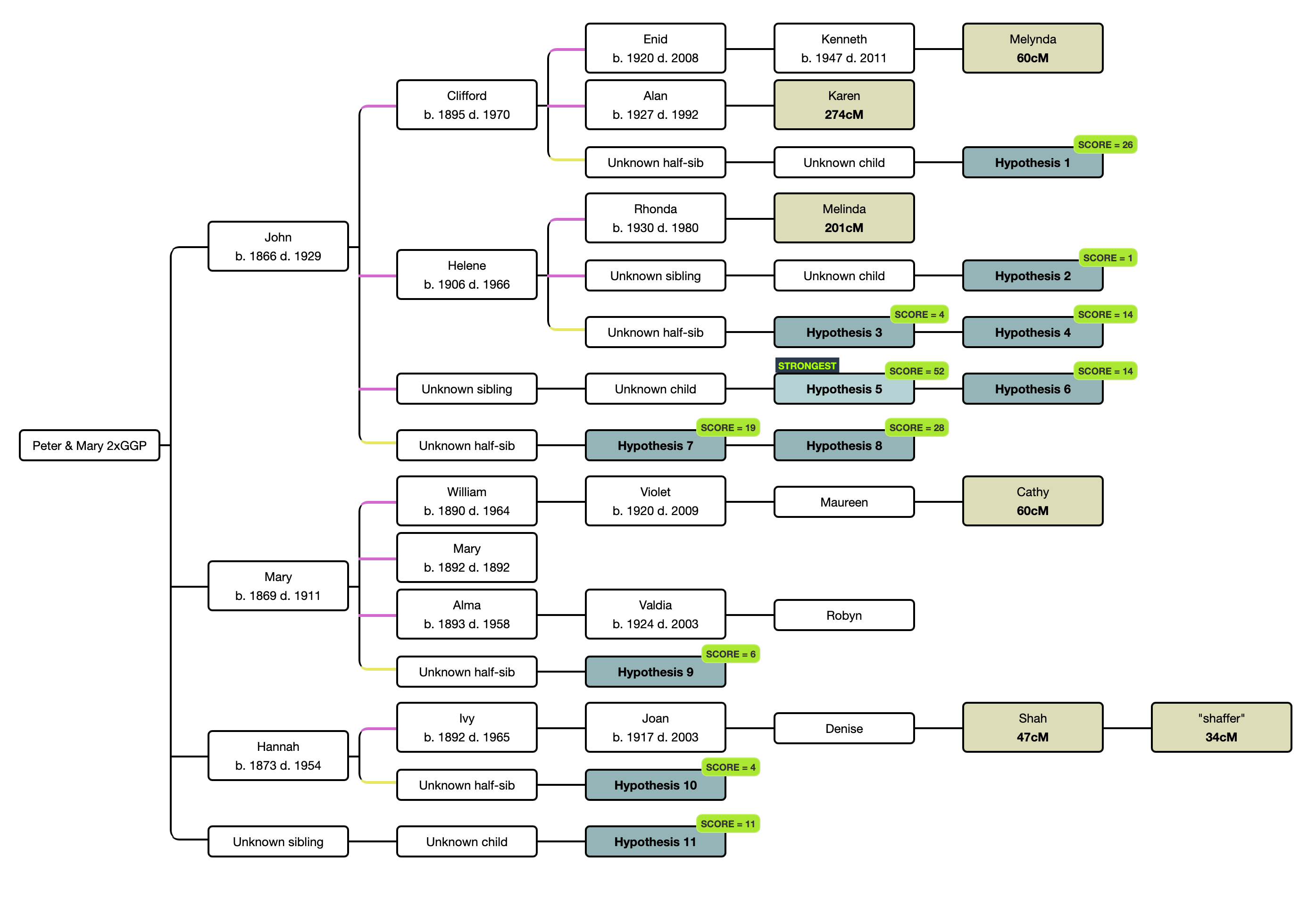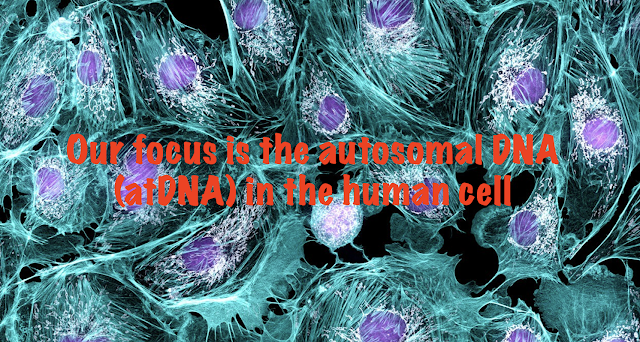MODULE 4 Activity: Getting to know WATO
In this activity, you're placing yourself (the target/tester) into a well known tree - your own well researched tree!
- Chose one of your great-great-grandparent couples where you have a group of known AncestryDNA matches who have that couple as your MRCA.
- Build a WATO tree from the great-great-grandparent couple out to each of the matches where your shared DNA is less than 400cM and enter the cM you share with these matches.
- Select "switch to beta probabilities" - do this whenever you're using AncestryDNA matches,
- Use the "Suggest Hypothesis" function at WATO and delete any hypotheses that don't meet the "time and place" criteria.
- Which hypothesis are you? Is it the strongest hypothesis?
- Now include any matches where your shared DNA is between 400cM and 1500cM and enter the cM you share with these matches.
- Use the "Regenerate Hypothesis" function at WATO and delete any hypotheses that don't meet the "time and place" criteria.
- Which hypothesis are you? Is it the strongest hypothesis?
Be prepared to discuss what you've learned and any issues you have with this exercise at the upcoming discussion sessions.
Here's the results for my M1 and M2 line
Here I've included my six matches on the M1/M2 line that are below 400cM. Once the hypotheses were generated, I deleted those which didn't meet the "time and place" criteria which resulted in eleven hypotheses scoring between 1 and 52.While I am Hypothesis 5 which is the strongest with the highest score of 52, more DNA matches and/or traditional genealogical research is needed to eliminate other hypotheses.
Now I've included my two matches of 400cM or more. When I regenerate the hypotheses, they are reduced from eleven to two. While I am Hypothesis 2, it's only twice as likely as Hypothesis 1. So the WATO is pointing to me being a grandchild or great-grandchild of Kelvin. However, more evidence would be required to prove that I was the half sibling or first cousin to Suzanne and Lorraine.


